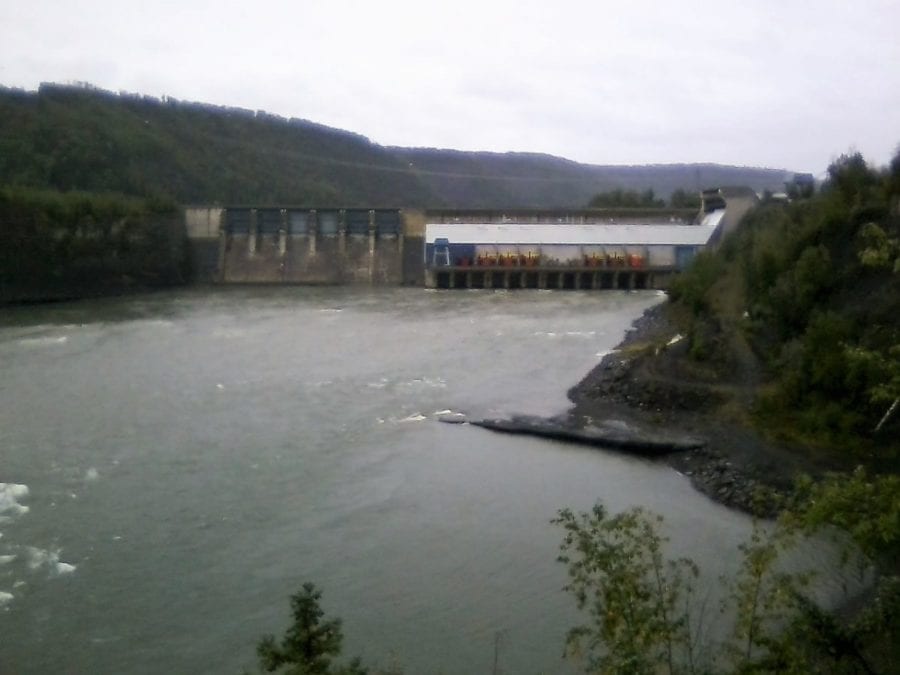BC Hydro has confirmed prolonged water spills from the W.A.C Bennett and Peace Canyon dams that are flowing into the Peace River.
The release, which began July 17 and continued until Aug. 18, was a result of higher-than-normal snow melt and rainfall.

Bob Gammer, a spokesperson for BC Hydro, said that the water flowing into the Williston reservoir from rain and snowmelt, was 20 per cent more than normal.
During normal activities at the Peace region facilities, the water flowing past Site C – a construction site on the Peace River where BC Hydro is building a new dam and generating system – is typically between 1,900 and 2,000 cubic-metres per second (m³/s). During the release over the last four weeks, the water flow has fluctuated from 2,250 m³/s to 2,500 m³/s.
In addition to having to release water from a larger-than-normal rainfall and snowmelt inflow, BC Hydro is working to create buffer space at their sites in case of more rain, which Gammer says they are expecting.
“What we’ve been doing so far is preventative,” Gammer said. “When we talk about setting something aside for a rainy day, that’s exactly what we’re doing.”
Since dam construction can only take place on dry land, BC Hydro has to divert the water flowing past Site C with hillside tunnels on the north bank of the Peace River. While many of the factors at play are unpredictable, Gammer said the idea of creating buffer space is to be able to keep control over the water flowing through the river diversions.
“We can’t control everything but we can control some of it, so that’s what we’re trying to do,” he said.
As the Slave River and Great Slave Lake in the NWT are upstream from B.C. waterways, the two jurisdictions have been connected through a trans-boundary water agreement since 2015. This prolonged spill is in addition to a release at W.A.C Bennett dam overnight July 12-13.
Rick Pattendon, a professional fish biologist with Mainstream Aquatics Ltd. in Alberta, said that spill operations have the potential to impact fish habitat and aquatic systems. In this case, however, he said the spill's capacity to change water temperature "likely is not sufficient to affect aquatic organisms because the change will be within the normal seasonal range experienced by the river."
On the spill's possible affects on the Peace River's total gas pressure (TGP) – another variable for aquatic systems – he said spill operations may increase the concentration of TGP in the river, but couldn't say whether that would be harmful to fish without more information from BC Hydro.
"In general, high river flows that are within the range of typical annual flood flows for a river system are not considered detrimental to the aquatic environment," he said.
BC Hydro will be required to monitor water temperatures, TGP concentration and flows of the Peace River during their spill operation.
While water releases are a normal part of hydro activities, a prolonged spill like this one has only happened twice before in the last 20 years at the Peace region facilities.